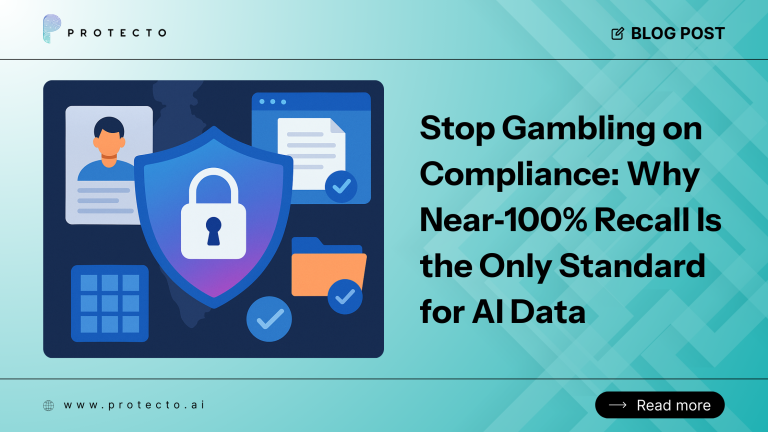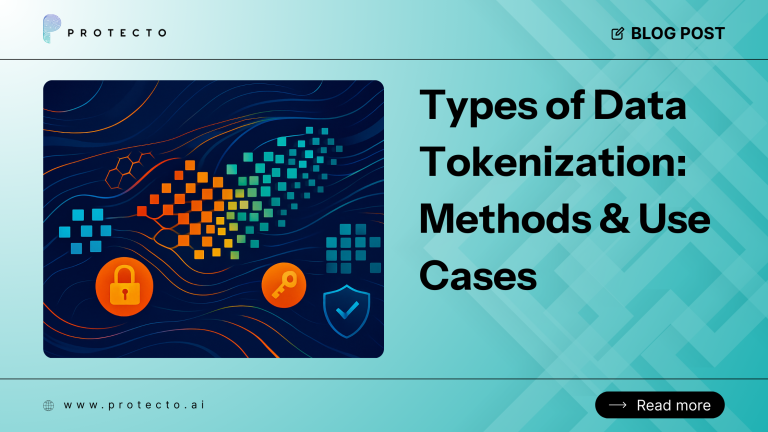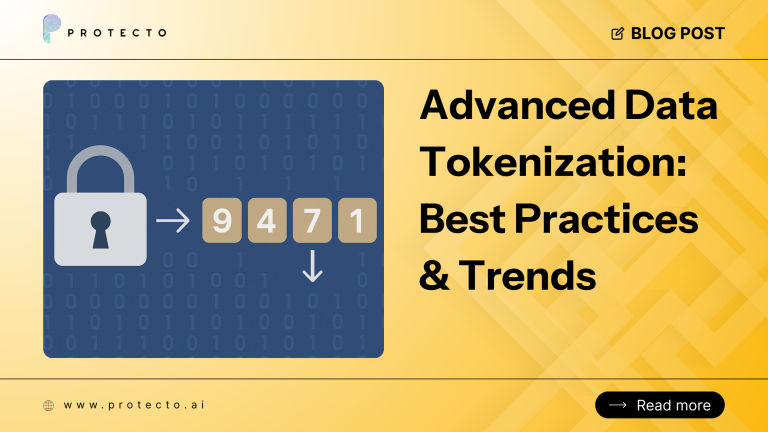Protecting patient privacy is vital in the healthcare industry. The rise of digital records has made safeguarding sensitive information more challenging. De-identifying healthcare data ensures compliance with regulations like HIPAA while protecting patient information. Key concepts include PHI (Protected Health Information), de-identification, and the safe harbor method.
What is De-Identification of Healthcare Data?
De-identification removes personal identifiers from healthcare data to protect patient privacy. This process minimizes the risk of re-identifying individuals while maintaining data utility. It applies to PHI, patient records, and other sensitive information.
De-identifying data offers significant benefits. It enhances patient data privacy and reduces the risk of breaches. It also allows organizations to share information securely for research and analysis. For example, hospitals can share de-identified patient data with researchers without compromising confidentiality.
De-identification also supports innovation. Healthcare providers can leverage de-identified patient data to develop new treatments and improve patient outcomes. By enabling secure data sharing, organizations can collaborate with researchers and technology developers without exposing sensitive information.
Interested Read: Healthcare Data Masking: Tokenization, HIPAA, and More
Key Techniques for De-Identifying Healthcare Data

Safe Harbor Method
The safe harbor method removes specific identifiers to comply with HIPAA standards. This includes names, phone numbers, and Social Security numbers. By eliminating these details, the data becomes less identifiable.
Steps in the HIPAA safe harbor method include:
- Identifying and removing 18 categories of personal identifiers.
- Ensuring no residual information can be used to identify individuals.
This method is widely used because of its simplicity and clear guidelines. For instance, removing patient names and contact details from medical records ensures compliance while preserving data for analysis. Organizations also rely on the safe harbor method to streamline compliance processes and reduce risks.
Expert Determination
Expert determination involves a qualified professional certifying that the risk of re-identification is minimal. This approach is often used when the safe harbor method is insufficient.
Experts assess data and apply statistical techniques to reduce risks. This method is preferred for complex datasets where identifiers are less noticeable. For example, an expert may evaluate patterns in genetic data to ensure it cannot be linked to individuals. Expert determination provides flexibility for organizations handling unique or non-standard data sets.
Pseudonymization
Pseudonymization replaces direct identifiers with pseudonyms, maintaining data usability. Unlike anonymization, pseudonymization allows re-identification if necessary.
An example includes replacing patient names with unique codes. This approach protects privacy while enabling the tracking of patient outcomes in long-term studies. Healthcare organizations often use pseudonymization to balance privacy and functionality in clinical research.
Anonymization
Anonymization permanently removes all identifying information, making re-identification impossible. This method ensures maximum privacy but limits data usability compared to pseudonymization.
For instance, anonymizing survey responses by removing demographic details prevents tracing data back to individuals. However, it may reduce the data’s value for targeted analysis. Organizations use anonymization for projects requiring absolute confidentiality, such as public health reports.
Read More: Differences Between De-Identification And Anonymization
HIPAA Compliance and De-Identification Standards
HIPAA establishes strict guidelines for protecting patient health information. Compliance requires robust de-identification methods to ensure data privacy.
The safe harbor method and expert determination are two key HIPAA de-identification methods. While the safe harbor method offers simplicity, expert determination provides flexibility for complex datasets. Adhering to these standards prevents breaches and builds trust with patients.
HIPAA compliance also extends to data sharing. Organizations must ensure that shared information meets HIPAA standards, regardless of the recipient’s location or purpose. This safeguards patient data privacy in all contexts.
Read More: Protecting PHI in Unstructured Medical Text
Best Practices for De-Identifying Healthcare Data

Implementing effective de-identification requires careful planning. Best practices include:
- Conducting regular audits to verify the effectiveness of patient data de-identification methods.
- Using advanced tools for PHI de-identification, such as automated software that identifies and removes sensitive data.
- Training staff on HIPAA regulations and secure data handling.
- Ensuring de-identified patient data cannot be easily re-identified by combining it with other datasets.
Organizations can also establish clear protocols for data sharing. This ensures that all shared information complies with legal and ethical standards. By following these practices, organizations enhance patient data privacy and maintain compliance.
Another essential practice involves staying updated on regulatory changes. As laws evolve, organizations must adapt their de-identification methods to remain compliant. Proactive monitoring of industry trends helps maintain high standards.
Challenges in De-Identifying Patient Data
De-identifying healthcare data presents unique challenges. Balancing data utility with privacy protection is one of the biggest hurdles. Organizations must ensure data remains valid for research without compromising patient data privacy.
Compliance across diverse healthcare applications adds complexity. For example, de-identifying data for clinical trials requires different approaches than for administrative purposes.
The risk of re-identification remains a concern. Combining de-identified patient data with external datasets can inadvertently reveal identities. Mitigating this risk requires advanced techniques and vigilant monitoring.
Another challenge involves evolving regulations. As global standards change, organizations must adapt their methods to remain compliant. Staying informed about updates to laws like HIPAA is essential for ongoing compliance.
Data interoperability also poses challenges. Organizations must ensure that de-identified patient data can be securely shared across platforms without compromising privacy. This requires robust technical solutions and collaboration among stakeholders.
Use Cases for De-Identified Patient Data
De-identified data supports various applications while protecting privacy. Key use cases include:
- Healthcare Research: Researchers analyze de-identified patient data to study diseases and develop treatments without exposing personal information.
- AI and Machine Learning: Training AI models with de-identified data ensures compliance while advancing healthcare technologies.
- Data Sharing: Securely sharing data with third parties, such as vendors and academic institutions, promotes collaboration and innovation.
Additional use cases include public health monitoring. For instance, de-identified data helps track disease outbreaks while safeguarding individual privacy. This enables governments and organizations to respond effectively to health crises.
Pharmaceutical companies also benefit from de-identified data. It allows them to conduct drug trials and assess treatment effectiveness without compromising patient confidentiality.
Emerging Trends in Patient Data De-Identification
New technologies are transforming PHI de-identification. AI and automation streamline processes, making them faster and more accurate. Innovations like secure multi-party computation and differential privacy further enhance data protection.
Global standards are also evolving. Harmonizing regulations across countries ensures better interoperability and strengthens protecting patient privacy worldwide.
Emerging techniques also focus on real-time de-identification. This allows organizations to process and share data securely without delays. Such advancements are crucial for time-sensitive applications like emergency response and clinical trials.
Blockchain technology is another emerging trend. By using decentralized ledgers, organizations can enhance data security while maintaining transparency. This innovation supports secure data sharing and strengthens patient data privacy.
Conclusion
De-identification is crucial for protecting patient data and complying with regulations. Organizations can safeguard privacy while enabling innovation by adopting robust techniques and following best practices. Protecto offers advanced solutions to simplify de-identifying healthcare data and ensure compliance. Secure your operations with Protecto today.




